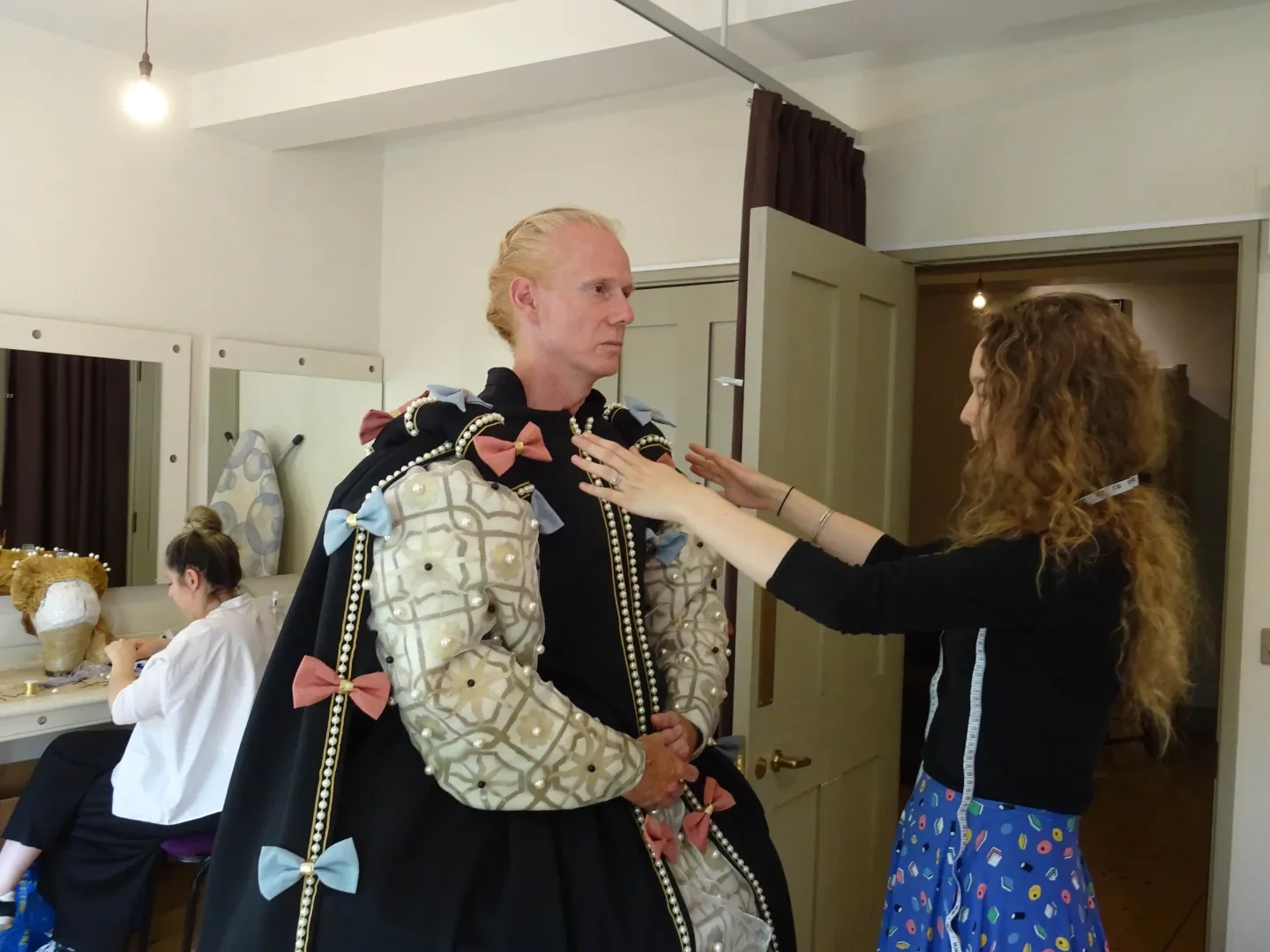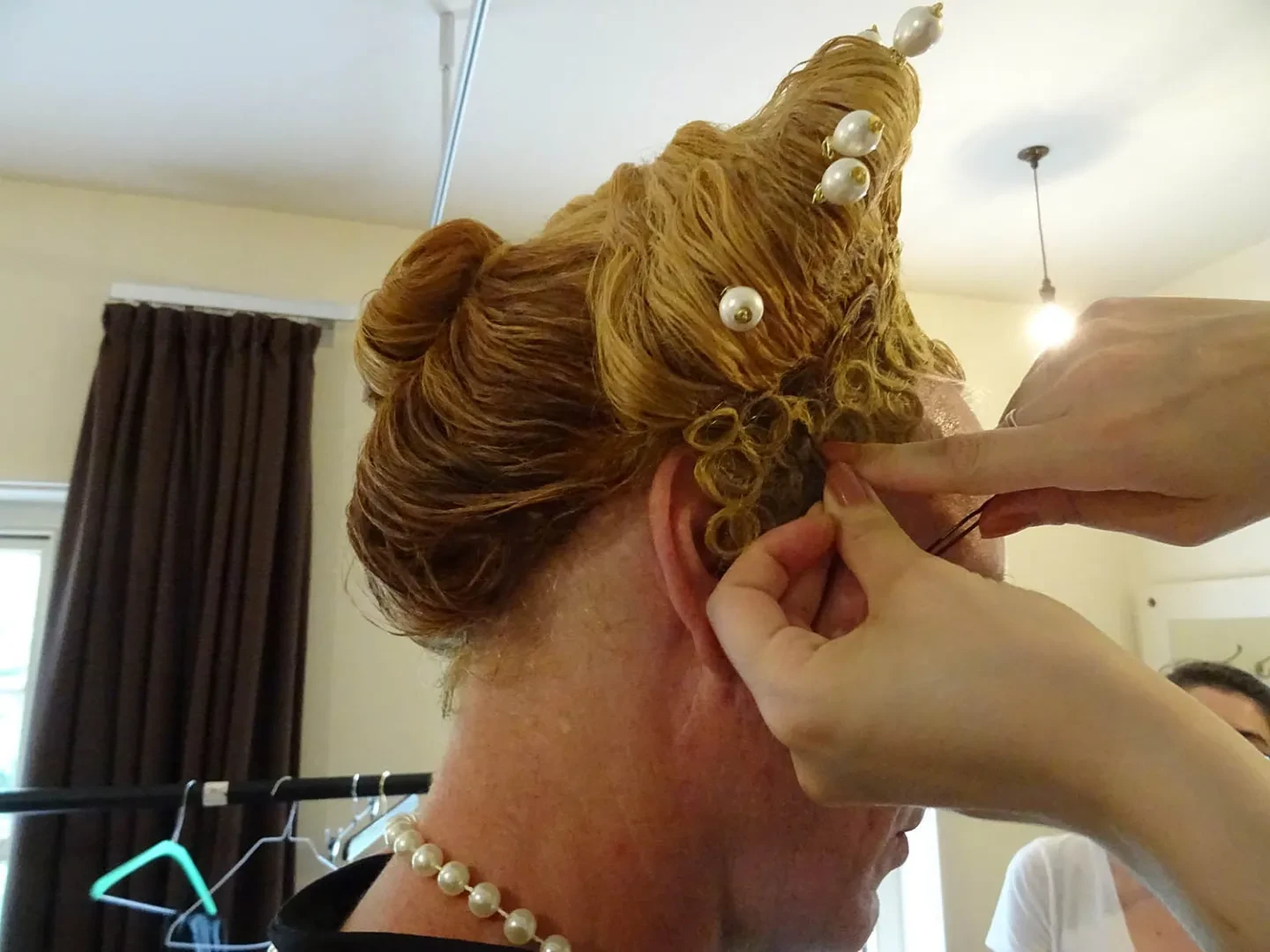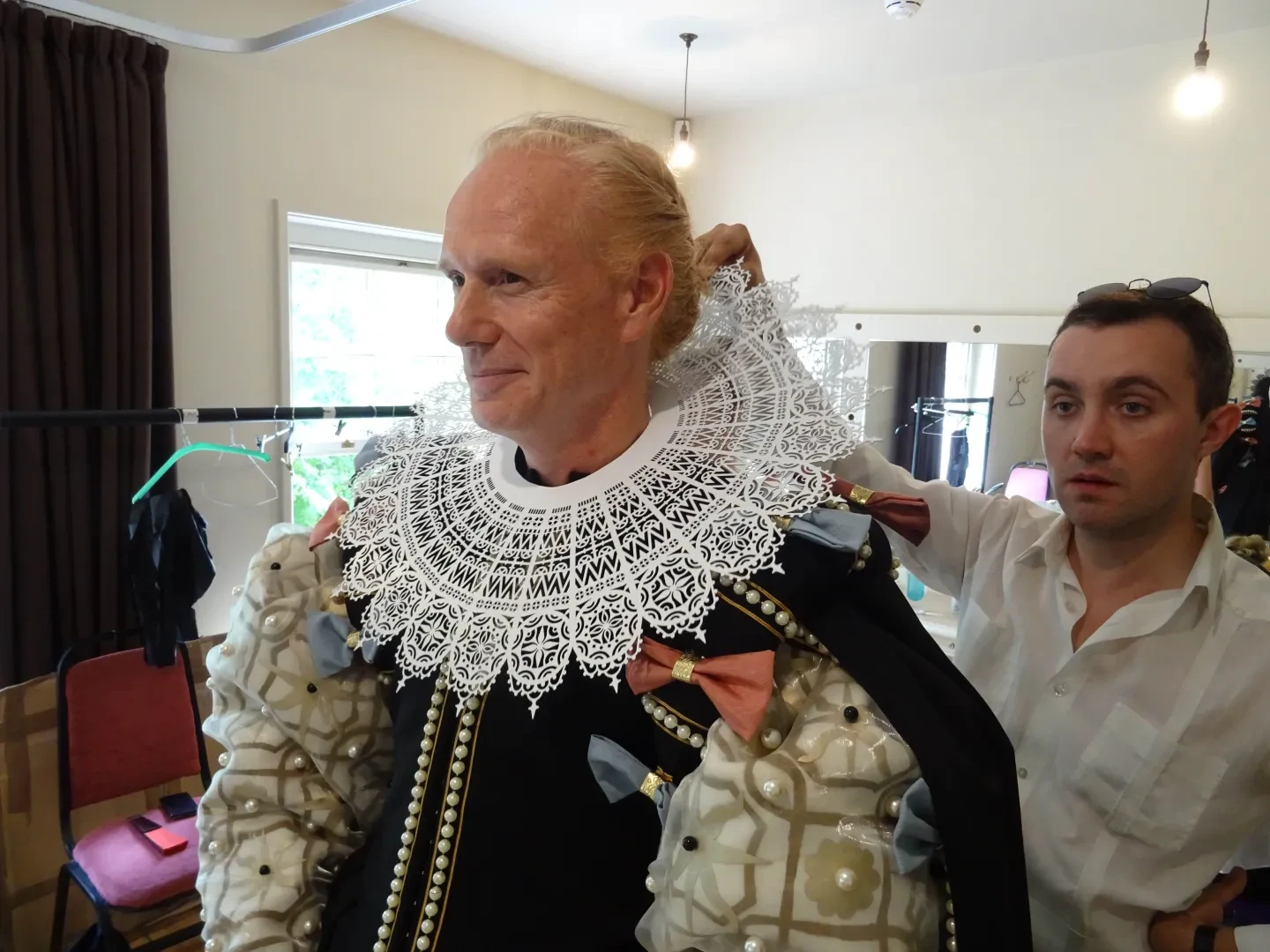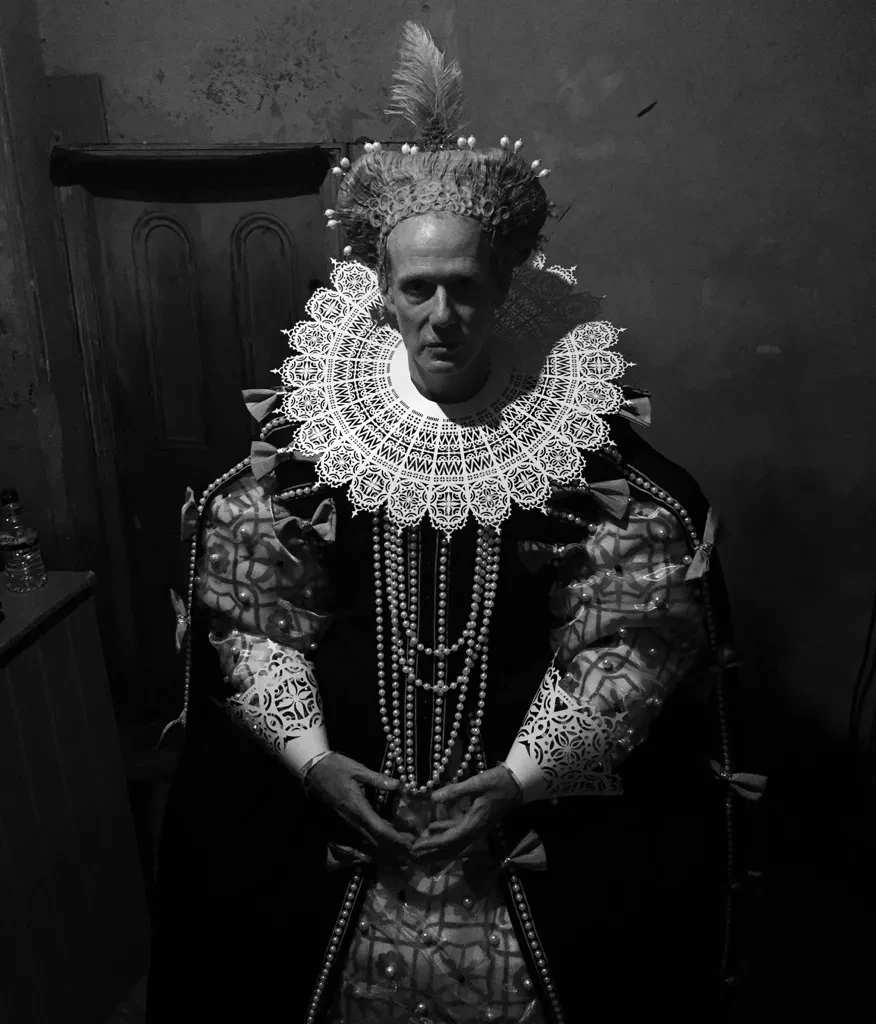
Performer and writer Christopher Green is bringing his unique approach to a new interpretation of Elizabeth I inspired by the Armada Portrait in the Queen’s House. Working with a team of expert costume designers and makers led by Bronya Arciszewska and Oliver Cronk, Christopher will explore how the most magnificent image of Tudor royalty is assembled layer by layer. What does it mean to be an icon? And how do you construct one?
Kate Wilkinson spoke to Christopher during his final costume fitting.
What was it about Elizabeth I that first drew you in?
I’ve been obsessed with Elizabeth I since I was little, when I saw Glenda Jackson on TV. It was a really informative experience. She didn’t look like anybody I’d ever seen before. That was the point of connection.
Elizabeth I is one of those historical characters who really stands out. She’s one of the most interesting in terms of popular culture because she’s been interpreted in so many different ways in so many different times. I think that’s probably because she’s always been about image and the construction of an image – which is what we’re doing.
I was intrigued – what was she like? Was she like how she was played by Cate Blanchett? Or how she was played in Blackadder? There are all these different interpretations, so it’s all up for grabs, which makes it such a great project to do.

Did your perception of Elizabeth I change throughout the process?
My starting point was the Armada Portrait, and my initial idea hasn’t really changed. I wanted to see if I could do less and achieve more as a performer.
Let’s see Elizabeth be created and then let’s see - what do I bring? Or it’s perhaps more accurate to say what do people bring? What does the public bring? I want to see what people imprint on me.
We make this costume, based on the Armada Portrait, and then go out into the people and see what they do with it.
How has the Armada Portrait inspired you?
On that first day we had a meeting under the portrait and then I spent an hour sitting there and just being around it and looking at it, which is such a luxury.
I think it is an incredible piece of iconography. It’s myth-making.
It’s all about her as a figure telling her people – I’ve got this, I know what I’m doing. You can trust me.
How do you imagine people will react to you?
I imagine most people will take pictures. Above that I’m intrigued to see what people know about her and what they might tell me about her. Interacting with people is what I’m really interested in.
We know quite a lot about Elizabeth I – or we think we do. We know she had terrible teeth, she had awful skin, her hair was shaved back. I’m sure people will be telling me about these strange half-truths.
Tell me a bit about the performance
We’re bringing in the ladies of the bedchamber – a mix of people – and they have to dress me. It’s not about creating a flawless performance. There will be 20 bits of costume and me – and they have to work out how it fits together. We’ll be showing the fantastical logistics of putting on an elaborate costume that you don’t normally see.
I’m involved but I’m not directing the process – I haven’t designed the outfit, I haven’t prescribed how each part goes together, so they’re going to have to work some of that out.

How do you feel when wearing the costume?
I’ve been working with a really skilled team to create the costume. It’s not as restrictive as I imagined it would be. For example, the corset isn’t about creating a tiny waist in the Victorian style. I’ve worn much more uncomfortable things!
It’s very architectural, one thing goes on top of another, making it weirdly disconnected from your body. Movement is delayed: you do something and then a few seconds later everything follows. You obviously can’t run in it and you have to go through doors sideways.
How does the costume connect you to Elizabeth I?
I hadn’t fully realised, though it seems obvious now, but the primary thing with the costume is it’s all about giving Elizabeth space. No one can come anywhere near you. It demands an incredible amount of respect because no one can come close.
In the past, after shows, people always come up and want to have photographs taken with you. They’ll just come up and grab you. It’s an amazing intimacy, because it’s for a photo. It’s kind of fine but they wouldn’t do this if it wasn’t for a photo. But with Elizabeth it just won’t be possible.

How do you feel about playing a woman?
It’s not something I think about a huge amount. My female characters are characters.
Having said that, I think gender is at the heart of where we’re at as a society and it’s important to question that constantly. People have been doing that for centuries so it’s nothing new, but it’s where the change is going to happen.
Traditionally I’ve been interested in inhabiting people who are really different from me. The most immediate way to do this is to play someone of the opposite gender because our gender roles are so defined in our society. So that becomes a liberation.
I think Elizabeth I was a fascinating woman because all of the pressure on her – like no one else in history really. I want to bring all of that to the performance without stating any of it.
In the end it’s just me with my body, so it’s like saying if I can be made to look like this anybody can, and what does that mean?
The Armada Portrait and beyond
See and share photos from Christopher's performances using #ArmadaIcon
We are working with a range of creative practitioners who have responded to the Armada Portrait of Elizabeth I in their own unique ways. Find out more
